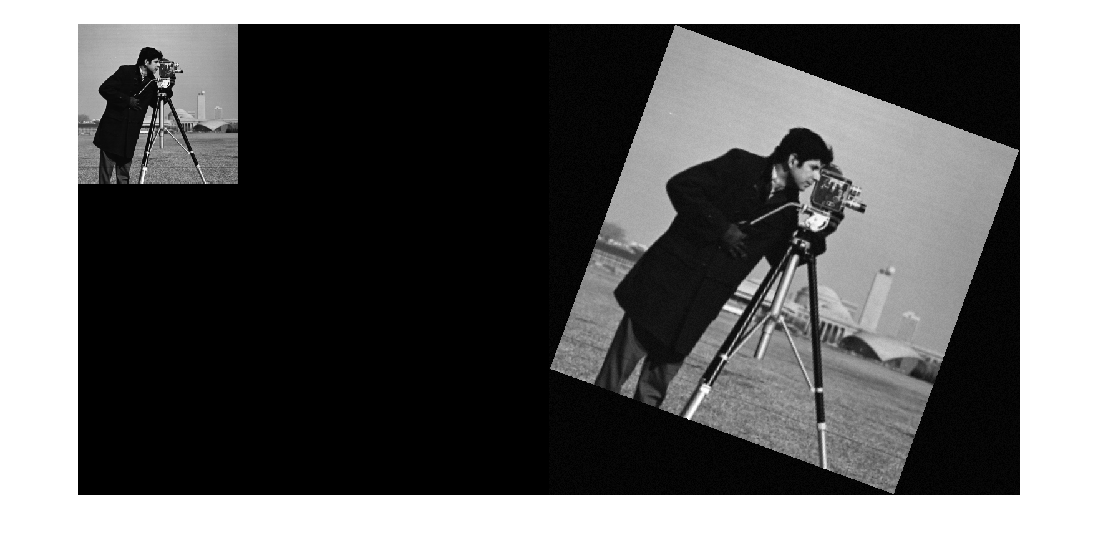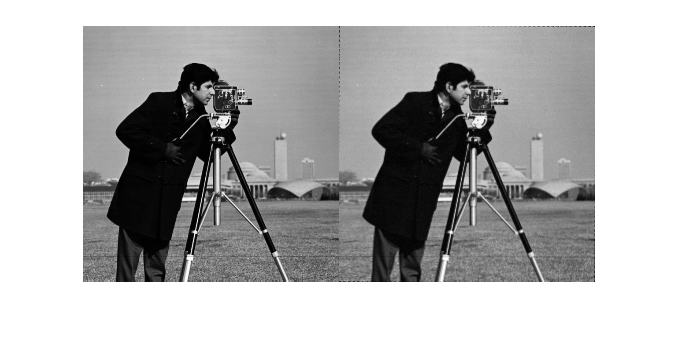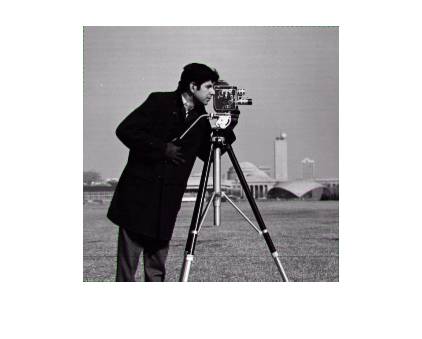imregcorr
Estimate geometric transformation that aligns two 2-D images using cross correlation
Syntax
Description
tform = imregcorr(moving,Rmoving,fixed,Rfixed)moving, with a reference image, fixed.
Rmoving and Rfixed are spatial
referencing objects that contain spatial information about the
moving and fixed images, respectively.
The geometric transformation, tform, defines the point mapping
in the world coordinate system.
tform = imregcorr(___,Name=Value)
Examples
Input Arguments
Name-Value Arguments
Output Arguments
Tips
If your image is of type
double, you can achieve performance improvements by casting the image tosinglewithim2singlebefore registration. Input images of typedoublecause the algorithm to compute FFTs indouble.Because of differences in the gradient correlation and phase correlation algorithms, the peak correlation value
peakcorrshould not be used as a metric to compare the performance of the algorithms.
References
[1] Reddy, B. S. and Chatterji, B. N. "An FFT-Based Technique for Translation, Rotation, and Scale-Invariant Image Registration." IEEE Transactions on Image Processing, Vol. 5, No. 8, August 1996.
[2] Tzimiropoulos, Georgios, Vasileios Argyriou, Stefanos Zafeiriou, and Tania Stathaki. “Robust FFT-Based Scale-Invariant Image Registration with Image Gradients.” IEEE Transactions on Pattern Analysis and Machine Intelligence 32, no. 10 (October 2010): 1899–1906. https://doi.org/10.1109/TPAMI.2010.107.


